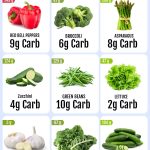Diet plays a significant role in managing diabetes, and understanding which foods are safe to consume is crucial for individuals with this condition. Starchy vegetables are a common source of confusion when it comes to diabetes management. In this article, we will explore the relationship between starchy vegetables and diabetes, providing insights into whether you can include these veggies in your diet. We will also offer external links and address frequently asked questions (FAQs) related to this topic to help you make informed dietary choices.
Understanding Starchy Vegetables
Starchy vegetables are rich in carbohydrates, specifically starch. These carbohydrates are broken down into glucose (sugar) during digestion, and they can impact blood sugar levels. Common starchy vegetables include:
- Potatoes
- Sweet potatoes
- Corn
- Peas
- Butternut squash
- Acorn squash
Can You Include Starchy Vegetables in Your Diabetic Diet?
The answer is yes, but with some important considerations:
1. Portion Control:
Portion control is key when including starchy vegetables in your diet. Keep the serving size in check to avoid excessive carbohydrate intake. Measuring your portions can help you manage your blood sugar levels effectively.
2. Balance with Non-Starchy Vegetables:
It’s essential to balance starchy vegetables with non-starchy ones like broccoli, spinach, and bell peppers. Non-starchy vegetables are lower in carbohydrates and can help offset the impact of starchy veggies on blood sugar.
3. Cooking Methods Matter:
How you prepare starchy vegetables can influence their effect on blood sugar. Boiling or steaming starchy vegetables can result in a lower glycemic index compared to frying or roasting, which can make the carbohydrates more quickly digestible.
4. Timing Matters:
The timing of your starchy vegetable consumption matters. Consuming them with a meal can help slow down the digestion process and minimize blood sugar spikes. Avoid eating starchy vegetables as a snack between meals.
5. Monitor Blood Sugar:
Regularly monitor your blood sugar levels to gauge the impact of starchy vegetables on your individual response. This will help you make necessary adjustments to your diet.
Can Eating Bananas in a Day Treat Vitamin K Deficiency in Blood?
External Links
- American Diabetes Association – All About Carbohydrate Counting
- Mayo Clinic – Diabetes Diet: Create Your Healthy-Eating Plan
FAQs
1. Can people with diabetes eat potatoes?
Yes, people with diabetes can include potatoes in their diet, but in moderate portions and with careful attention to other carbohydrate sources in the meal.
2. Are sweet potatoes a good choice for diabetics?
Sweet potatoes can be a better choice for diabetics compared to regular potatoes due to their lower glycemic index. However, portion control is still essential.
3. How do starchy vegetables affect blood sugar levels?
Starchy vegetables can raise blood sugar levels due to their carbohydrate content. The effect varies depending on factors like portion size, cooking method, and timing of consumption.
4. Should I avoid starchy vegetables completely if I have diabetes?
Starchy vegetables can be a part of a diabetic diet when consumed in moderation and balanced with non-starchy vegetables and lean proteins. Consult with a healthcare professional or dietitian to create a personalized meal plan.
5. Can starchy vegetables be a part of a low-carb diet for diabetes?
Starchy vegetables can be included in a low-carb diet for diabetes, but the portion size should be limited to control carbohydrate intake effectively.
Conclusion
Starchy vegetables can be a part of a balanced diet for individuals with diabetes, but it’s crucial to be mindful of portion sizes and how you prepare and time your consumption. By carefully managing your intake of starchy vegetables and combining them with non-starchy options, you can enjoy a diverse and nutritious diet while effectively managing your blood sugar levels. Consult with a healthcare professional or a registered dietitian to create a personalized meal plan that suits your specific needs and preferences.










